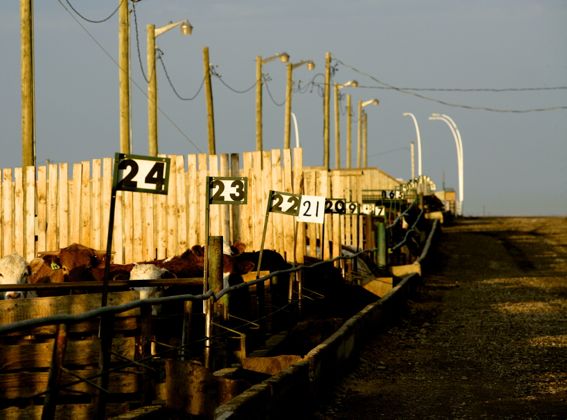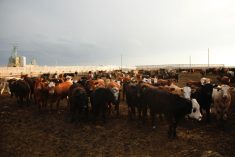Just when I thought feeder cattle prices were stabilizing, once again the unexpected occurs. A sharp rally in U.S. grain futures, along with weaker fed cattle prices, caused western Canadian feeder cattle to trade $6-$12 lower compared to week-ago levels.
Auction markets reported limited buying interest, with often only two or three larger feedlots stepping forward at major sales. The inability to pencil profitability after a string of heavy losses has many cattle producers throwing in the towel. Heavier replacements absorbed the brunt of the pressure with the jump in nearby feed grain prices.
Read Also

U.S. grains: Wheat futures rise on supply snags in top-exporter Russia
U.S. wheat futures closed higher on Thursday on concerns over the limited availability of supplies for export in Russia, analysts said.
Across Alberta, mixed steers with medium-type flesh, weighing 875 to 900 lbs., were actively trading in the range of $165-$168; heifers of similar weight were $20-$25 lower with prices hovering at $140-$145. At times, quality groups of heifers and steers were down as much as $15 because there were just no buyers at the time. Early in the week, sales in Saskatchewan and Manitoba may have shown a slight premium over Alberta but then traded at a discount by Friday. Strength in the Canadian dollar kept U.S. orders at bay and also tempered local demand as the week wore on. The sharp drop in live cattle futures put the nail in coffin on Friday, with feedlot operators totally backing away.
The uncertain outlook also kept buyers on the sidelines for grassers and feedlot calf orders. Earlier in the week, Angus-based heifers averaging 750 lbs. were quoted at $174 while Charolais mixed steers weighing 725 lbs. traded at $188 in southern Alberta; however, by Friday, these cattle were probably $2-$3 lower. Farmer/cattle producers are busy seeding or preparing equipment and couldn’t be bothered bringing in calves, resulting in the absence of yet another player. Smaller groups traded at a discount to the average while some heifers for herd replacements reflected a small premium.
Weekly U.S. beef production surged nearly 10 per cent compared to the same week last year. The expected year-over-year increase in second quarter beef production may be larger than earlier anticipated, because carcass weights are up 15 to 20 lbs. Retail prices are slow to decline so consumers are not readily absorbing the larger production.
— Jerry Klassen is manager of the Canadian office for Swiss-based grain trader GAP SA Grains and Produits. He is also president and founder of Resilient Capital, which specializes in proprietary commodity futures trading and commodity market analysis. Jerry owns farmland in Manitoba and Saskatchewan but grew up on a mixed farm/feedlot operation in southern Alberta, which keeps him close to the grassroots level of grain and cattle production. Jerry is a graduate of the University of Alberta. He can be reached at 204-504-8339.



















